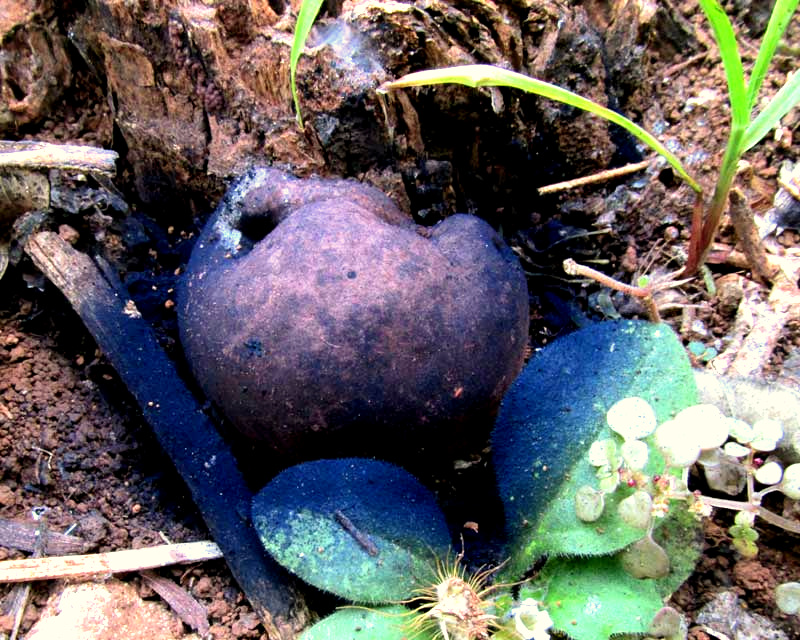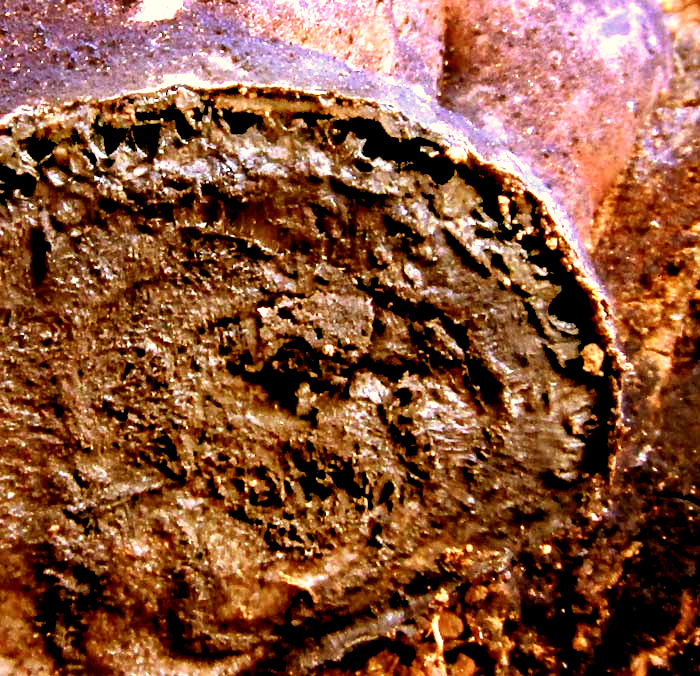Excerpts from Jim Conrad's
Naturalist Newsletter
Issued on January 13, 2020, from the forest just west of Tepakán; elev. ~9m (~30 ft), N21.053°, W89.052°; north-central Yucatán state, MÉXICO
EARTHBALL FUNGUS
Not ten feet from the hut's door, one morning a purplish blob about the size of an apple turned up on the ground. Up close it proved to be a fungus attached to the decaying stub of a small tree trunk, at ground level. Obviously it was discharging untold numbers of purplish spores onto the surrounding plants and ground, as shown below:

I figured it was some kind of puffball, but most puffballs have soft skins, while this fungus, when I poked it with a finger and scratched it with my fingernail, felt and sounded woody. I cut across a side lobe to make sure the interior looked puffball fungusy, and it did, as shown below:

I couldn't identify this, but eventually found pictures of something like it, though not showing enough detail to be certain. It's DALDINIA CONCENTRICA, occurring worldwide, but rarely documented in the Yucatan. That's the name we'll file it under, and hope that someday an expert will confirm or suggest something better.
Daldinia concentrica lives on both dead and decaying wood.